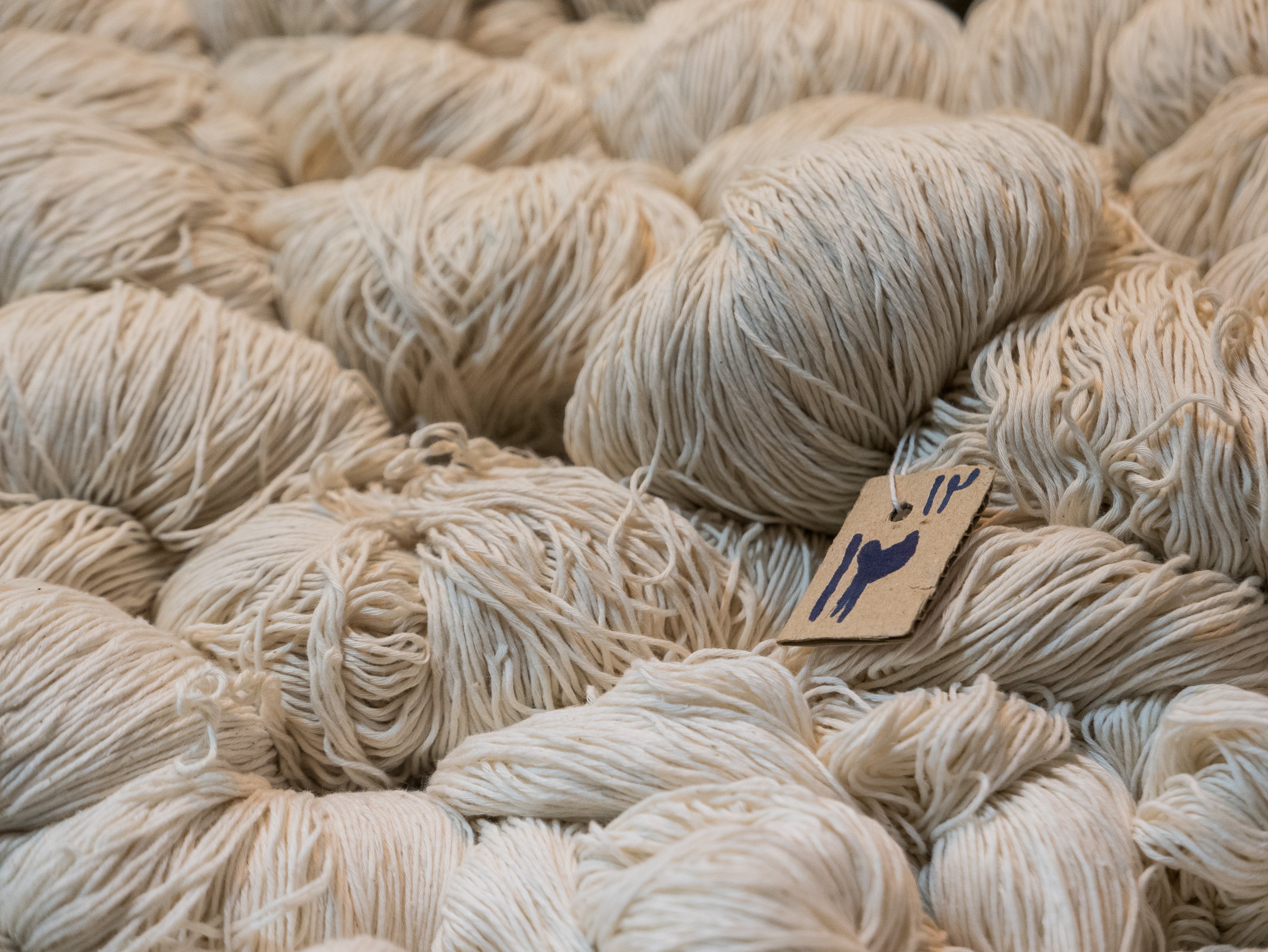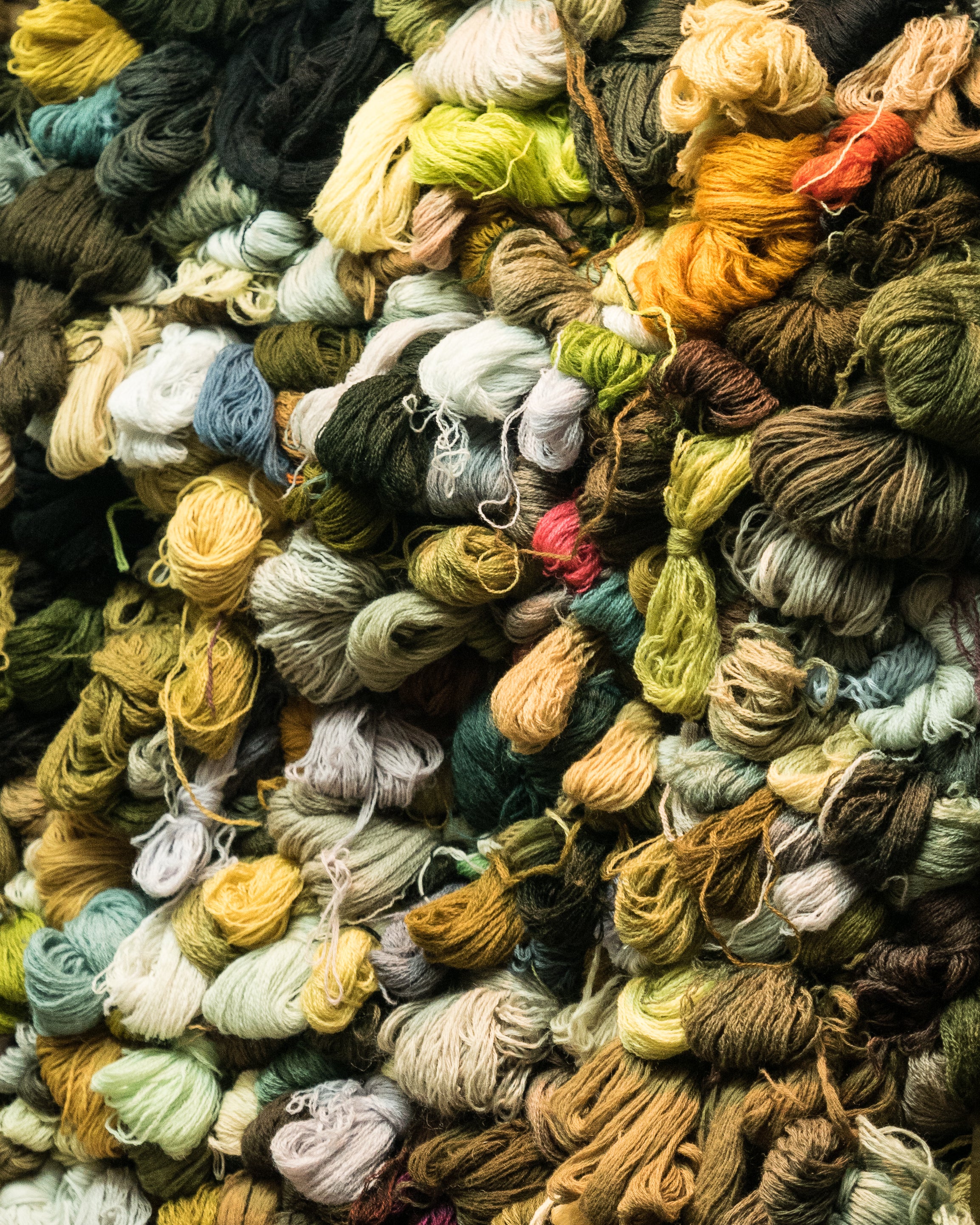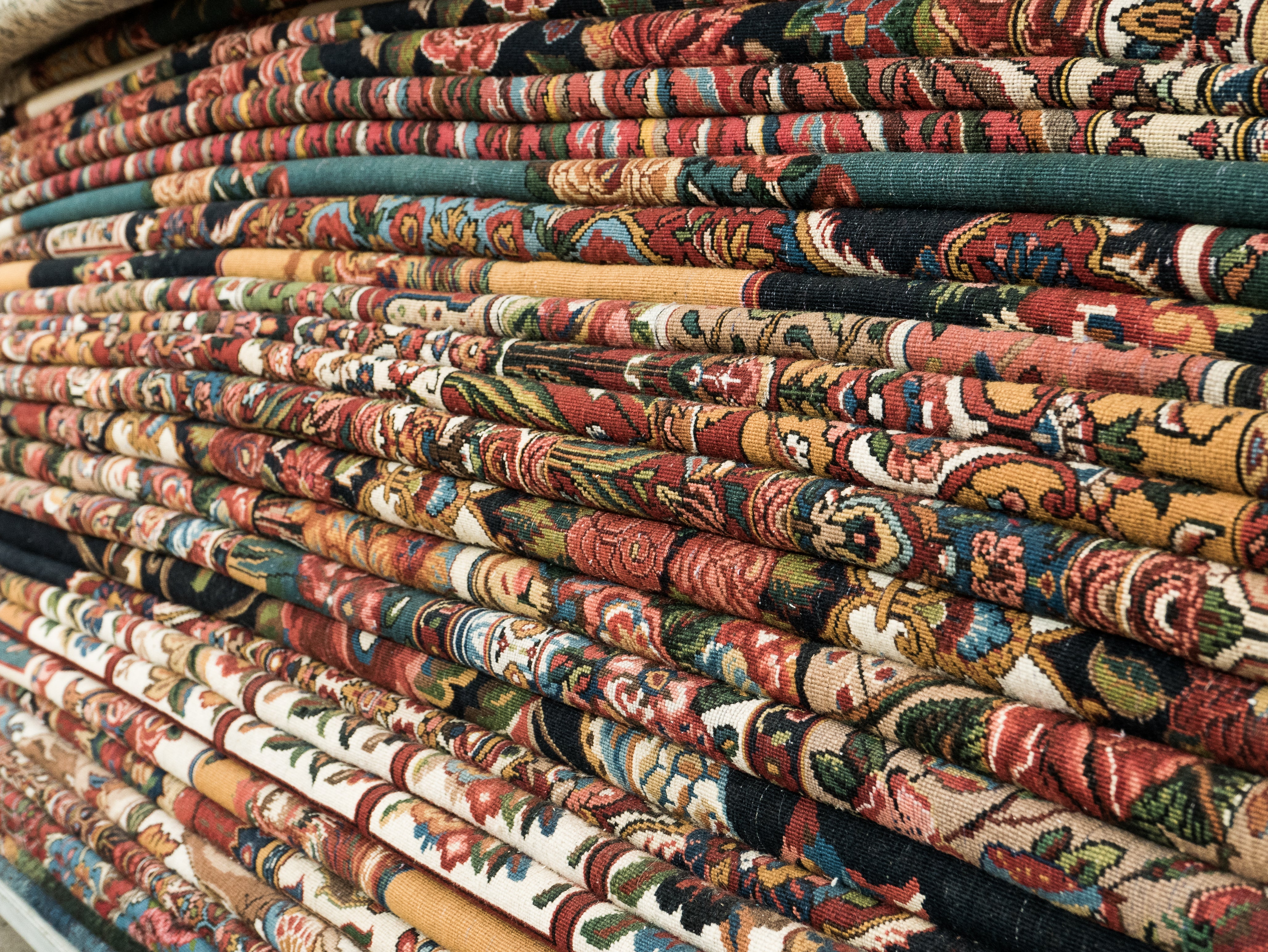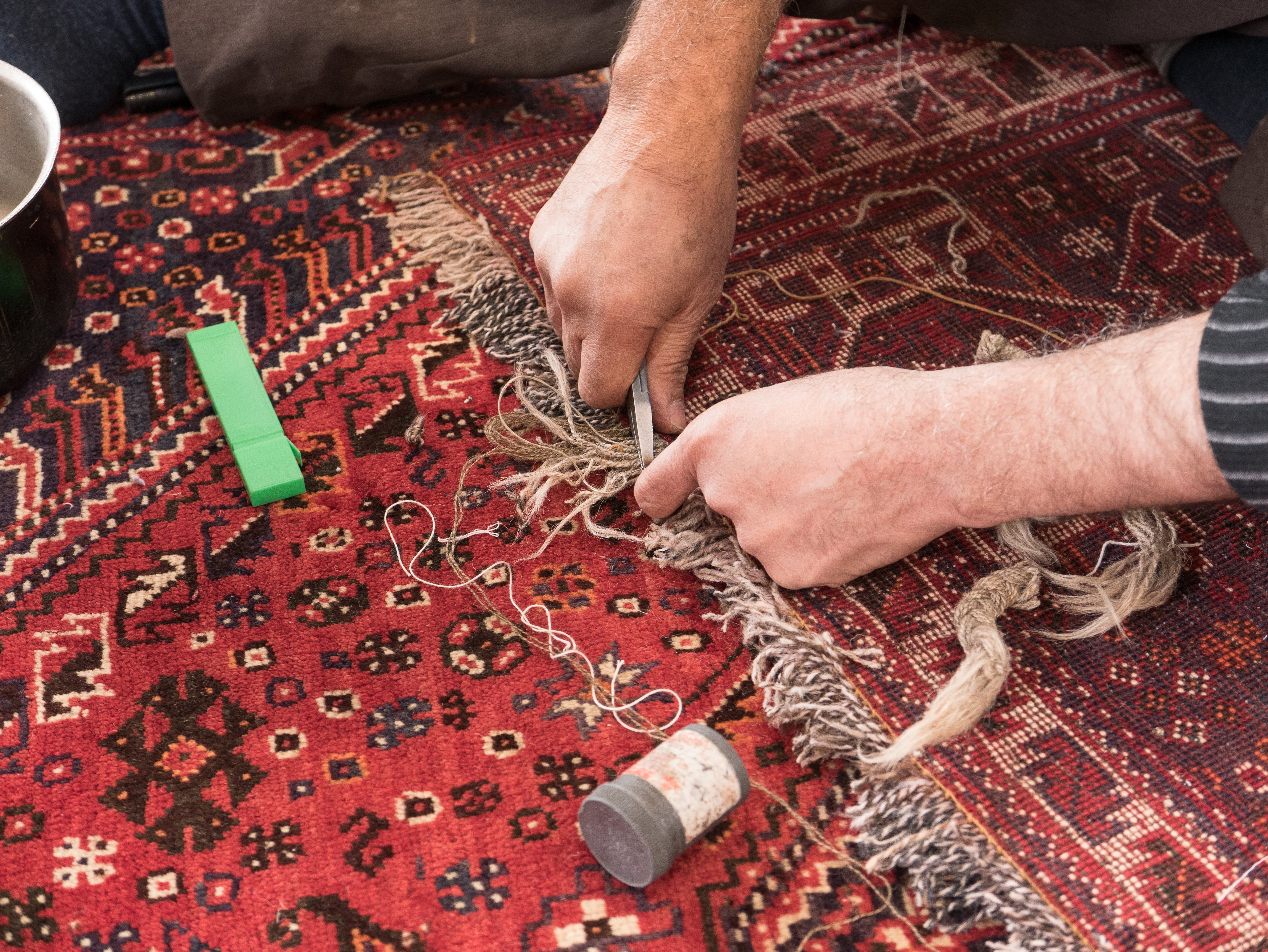What to consider prior to purchase?
Rugs are durable companions that can provide gratification for many years if they are suitable for you.
But which rug is suitable for me?
To some, a rug is just a piece of furniture. It is a piece of a large puzzle that must fit the rest; it has to suit the room and the rest of the furniture (the sofa, the table or the curtains).
Others have a real passion for rugs. They are rug lovers and collectors, who often have a vast knowledge of the history and typology of their rugs. Some collectors have a merely visual interest in the aesthetic and unique personality of handmade rugs. To rug lovers, a rug is like a painting, that would attract one's attention. The rug should match the rest of the decoration and interior design and doesn't have to be essentially secondary to it.
If you are new to hand-knotted rugs, you will be overwhelmed by the wealth of options and varieties. In the search for the right rug, your individual needs and personal taste should be the main focus.
Do you like simple, minimalistic designs, or mesmerizing, intricate patterns? Do you prefer muted, discreet colors, or can it not be colorful enough for you?
Before buying a rug, there are some questions you would need to consider. Practical matters always play a role, of course. We have tried to answer the most important questions for you here. The most important factors in our opinion are:
- Budget
- Size
- Material
- Production method
WHAT SIZE IS THE BEST FOR MY ROOM?
Rugs must be proportionate to the rest of the room and large enough to match your intended use for them. Whether a living room, dining room, bedroom or study, each room has a specific purpose, and the size of a rug must be adapted to it. Nothing is worse than wobbly dining room chairs or a living room rug, that the dog cannot find a place on, when looking for a crime scene!
Measure your room, but remember, it usually looks better if the rug does not cover the whole floor. Instead, the flooring should form a kind of passe-partout for the rug.
Keep in mind what furniture is in your room. For example, is a table going to be placed on the rug?
Our tip: Line the area, which the rug should cover, with newspapers. This way you can estimate which size works best in your room.
But remember: the closer you are to standard sizes, the greater your options will be.
The standard dimensions of rugs are:
- 1,50 m x 1,00 m
- 1,80 m x 1,20 m
- 2,00 m x 1,50 m
- 2,40 m x 1,70 m
- 2,50 m x 2,00 m
- 3,00 m x 2,00 m
- 3,00 m x 2,50 m
- 3,50 m x 2,50 m
- 4,00 m x 3,00 m
- 5,00 m x 3,00 m
We have preset these standard dimensions in our product filters, so that you can quickly find the rug of your dreams.
WHICH MATERIALS ARE THE RIGHT ONES FOR MY NEEDS?
It's not just the price that depends largely on the material of a rug. Whether it fits your individual lifestyle and the environment it is going to be used in, depends on the material of the rug, as well. Do you need a rug that is soft and easy to clean? Are you after an organic look and feel for your living space?

Natural
Natural materials give the rug a unique and organic look and a breathable texture. The choice in natural materials is wide and ranges from light and tough cotton, flattering silk, cozy and low-maintenance virgin wool, to tough and sturdy materials like sisal, hemp and jute.
Cotton rugs are soft and easy to clean, and lint rarely forms on them. Wool rugs are easy to care for and durable, thanks to their natural fat content (if they have been dyed with natural dyes and not bleached). The fat saturates the wool, so that liquids and dirt cannot penetrate the fibers, and can be cleaned with a damp sponge or cloth. When of good quality, hardly any or no lint forms on them. Silk rugs are thin and very soft, yet relatively durable.
Cotton
The cotton plant is harvested in most countries that produce rugs and is, therefore, very popular in rug manufacturing. This versatile material is tear-resistant and stretchable, making it particularly suitable for a durable woven backing.

Cotton is made up of shiny fibers filled with cell sap. When the cell sap dries after the harvest, the surface of the fiber warps and loses its shine due to the refraction of light. In the middle of the 19th century, John Mercer invented a process that's named after him: mercerization. During mercerization, cotton is given a new higher-quality fiber structure under tensile stress in concentrated cold sodium hydroxide.
Mercerized cotton has shortened fibers with a round cross-section. The processed fiber does not shrink and is very consistent in shape. Due to the changed refraction of light, the fiber gains a silky sheen. Mercerized cotton absorbs color more easily and is much more tear-resistant than natural cotton. Since mercerization is complex and expensive, only high-quality cotton fibers are refined through this process. Because of the silky sheen of the yarn, mercerized cotton, just like viscose, is often referred to as "artificial silk". However, the colloquial term "artificial silk" is not authorized under the Textile Labelling Act (TKG).
Virgin wool
Virgin wool is obtained through the gentle shearing of sheep. Virgin wool is a sustainable, natural raw material with a number of impressive properties. Due to the wool's natural fat content, its surface repels water droplets and is, as a result, naturally protected against dirt. Wool also offers excellent thermal insulation, has a regulating effect on indoor climate and muffles noise.

Cork wool
In Persian, cork wool roughly translates to fluff and is synonymous with fine-spun wool yarns. Nevertheless, it is a controversial term. The origin of this word is uncertain. One explanation links it to the Irish city of Cork. It is said that particularly fine-spun sheep's wool yarns used to be shipped to the Orient from this port at the end of the 19th century. This assumption is also backed by "Manchester wool", a material that was also exported to Persia from the British Isles and is found in old Oriental rugs of a category called the American Saroughs.
At any rate, cork wool always refers to a particularly fine-spun, almost velvety knotting yarn. Cork wool is typically obtained from a sheep's neck, belly and forearms and is, therefore, of a particularly high quality.
Hemp
The material for the nap of this rug is obtained from the bast (the tissue under the bark) of the hemp plant. Hemp makes rugs particularly sturdy and resilient. Hemp fibers have a rough feel and are up to three times more durable than cotton. Compared to cotton, however, the hemp plant is eco-friendlier to grow and is becoming increasingly popular. The plant does not need pesticides to grow, so it is considered to be very environmentally friendly. Because of its eco-friendliness and sturdy nature, rugs made of hemp are becoming increasingly popular for use in heavily frequented living spaces.
PURE SILK
Silk is hand extracted from the cocoons of the silk moth. Since individual silk threads are extremely long, very thin yarns can be produced from them, which are still tear-resistant against low tension. These thin yarns can form smaller knots and, thus, produce finer patterns. Therefore, the finest rugs in the world are hand-knotted from pure silk.
GOAT WOOL
The rather coarse-grained goat wool is very greasy and resistant to dirt and wear. In contrast to the sheep, the hair coat of the goat, with the exception of the cashmere goat, has undergone few breeding modifications for the purpose of wool production.
Synthetic
Acrylic
Synthetic materials often imitate natural ones. They are cheaper to produce but usually much more susceptible to dirt. Acrylic-based fibers, in particular, should not be used in living spaces. The synthetic dyes and softeners used to process them can evaporate and may cause unpredictable health complications, especially in children playing on the rug.
Viscose
Viscose is different from acrylic based fibers. It is a natural product. Some of our rugs are made from a durable blend of wool and viscose. Viscose (also called artificial silk, or rayon) is basically obtained from a natural product, that is cellulose coming from the natural raw material of wood. In India, cellulose mass is extracted from bamboo. Through a complex process, the pulpy cellulose is turned into a continuous textile yarn. This is why viscose is also known as the continuous filament yarn. Because of the silky sheen of the yarn, viscose originated from bamboo is also called "Bamboo Silk". The colloquially used designation "artificial silk" is not permitted under the German Textile Labelling Act (TKG).
PET
Through an innovative process, yarns for the production of rugs can be produced from PET bottles. These bottles or packaging are shredded and melted down to form a yarn.
Rugs made of recycled PET bottles have some properties that cotton and wool rugs do not have; they are very durable, water-resistant, and can even be used outdoors.
Such rugs are amazingly soft to the touch and reminiscent of wool kilims. They can hardly be differentiated from other woven rugs made of wool or cotton.
How is wool dyed?
Should I choose a rug dyed with natural or synthetic dyes?
Synthetic dyes
Synthetic dyes, used to dye wool, ensure a more even result, so there are fewer color transitions (or so-called abrash) in the nap.
Natural dyes
Dyeing with natural or vegetable dyes is more complex, more expensive, and more time-consuming than chemical dyeing. To dye one kilogram of wool a bright red shade, for example, you would need about one kilogram of ground madder root as dye. To achieve a vibrant yellow shade, you would need two kilograms of dyeing pigment per kilogram of wool. Other vegetable substances used to dye wool include curcuma, walnut, pomegranate and natural minerals.
But the effort is worth it, since natural dyes allow high-quality wool to retain its natural fat content. Wool, dyed with natural dyes and spun by hand, creates fascinating iridescent patterns.
The revival of traditional handmade rugs was sparked in Turkey a few decades ago by Harald Böhmer, among others. Harald Böhmer (1931-2017) was a German teacher of natural sciences at the German Gymnasium in Istanbul. He founded the DOBAG in 1981, which, among other things, managed to rediscover the centuries-old technique of dyeing wool with natural materials.
How is wool spun?
What is the difference between hand-spun and machine-spun wool?
Handspun wool
Handspun wool creates fascinating, iridescent patterns, because it is always somewhat uneven in color. This is due to the natural dyes being absorbed unevenly during the dyeing process. These color variations or abrash (light-dark hues) give the rug a livelier appearance. Color variations of the nap yarn always run across the length of the rug and make dirt and soiling less perceptible.
Handspun wool, with its slight irregularities, reveals its charm not only in rooms with traditional or country style interior designs, but also as a contrasting element in modern interiors.
It can happen that individual threads of hand-spun wool relax after a few years and become longer, protruding from the flat surface of the rug. This is absolutely normal and not a defect in the manufacturing of the rug. These threads can be easily trimmed to the length of the rest of the fibers.
Machine-spun wool
Spinning the wool with machines is cheaper, and the quality does not generally suffer in the process. The outcome is often more regular and even compared to hand-spun wool.
How was my rug made?
You might be wondering which production method and technique would be suitable for your needs.
Handmade rugs are a great addition to your home. The subtle irregularities and variations in the manufacture and size reflect the craftsmanship and skill of the manufacturer.
The production of hand-knotted rugs is extremely labor-intensive. It normally takes the weavers months or even years to complete a rug. Hand-knotted rugs have the highest quality out of all rugs on the market. The higher the number of knots in a rug, the clearer the pattern and the finer the quality.
Hand-woven rugs are made by weaving long threads of yarn. They are made on traditional looms, are usually flat-woven and can be used on both sides, unless they have been embroidered on one side. The production of a hand-woven rug ensures a stable source of income for the villagers of a region. Weaving machines are usually in the weaver's house and are operated completely manually without electricity.
Hand-tufted rugs have a pattern on the underside. Strands of fiber are shot through the underside with a tufting gun to form a nap. If the manufacturer misplaces one stitch, however, the entire rug is ruined. Tufting, therefore, is a very demanding job.
WHAT ARE THE TYPES OF KNOTS USED IN HAND-KNOTTED RUGS?
There are basically two types of knots used in the manufacture of most oriental rugs. One is the Persian knot, also known as the Senneh knot, and the other the Turkish knot, or the Ghiordes knot.
Both Persian and Turkish knots are usually tied around pairs of warp threads.
The Persian knot is asymmetrical and can be open on the right or the left side. For example, the four Persian knots in the following picture are open on the right side.

Turkish or Ghiordes knots are symmetrical. The following example shows four Turkish knots.

There are also the so-called Jufti or false knots. These can be seen in both Persian and Turkish styles. Jufti knots are tied around four warp threads instead of two. A rug made with Jufti knots takes about half the material and time to make. In some types of rugs, such as the bucharas, some areas are knotted with Jufti knots and others with standard Persian knots.
Persian Jufti knots look like this:

An example of Turkish Jufti knots are these two knots here:

SHOULD I BUY A USED OR A NEW RUG?
Many rug lovers are committed to new, unused rugs when shopping. However, after proper professional cleaning, a used rug can be a sensible and decorative alternative, since hand-knotted rugs are extremely durable and made to last forever. But used does not always mean recently used.
Der The value assessment of old, used rugs is an extremely complex topic. It might sound like a fairy tale from Thousand and One Nights, but in fact a few years ago a rug, valued by experts at 900€, was auctioned off for 7.2 million Euros. Admittedly, the bubble has burst on the value inflation of rugs, and even in times of unattractive interest rates on savings accounts, rugs are no longer a popular investment option. Yet, special antique rugs continue to enjoy great popularity and are auctioned off at top prices in prestigious auction houses. We offer particularly well-preserved, over-50-year-old collector's items in our online store under the category of "antique rugs".
Not every rug has the proper history, characteristics, and origin to attract high bids at an auction. Old oriental rugs from the 60s, 70s, and 80s were traded in Europe in large numbers and at high prices. In recent years, interest in bright colors and rich patterns has decreased significantly, and there has been a demand almost exclusively for subtle colors and patterns, that complement modern interior design or the country style.
For some years now, European designers have been reinterpreting classical patterns and colors, bringing their essence into the aesthetics of the 21st century. These innovative designs sell very successfully at high prices. They also increase interest in classic rug designs in general.
Lovers of colorful, floral patterns currently have the opportunity to purchase used but well-preserved oriental rugs from the time of the German economic miracle at reasonable prices. A new tradition can also be established through used rugs, because they outlast generations. Used rugs often look like new after cleaning, even though they have changed hands several times. In our online store, we offer these rugs in our Persia collection.
Defective rugs with worn areas, holes or loose fringes are in a separate category. Without appropriate repairs, these rugs are not quite as durable as well-preserved rugs. However, they can still be used for several decades, and the lovers of the Shabby Chic style of furnishing generally prefer these. In our online store, we offer these rugs in our Vintage Collection.
Ultimately, it is of course a question of taste and style, whether you decide to decorate your home with a used or a new rug. In any case, used rugs should not be categorically excluded.
Why are some rugs restored and others not?
We have consciously decided not to restore all of our rugs. We believe in the charm of old everyday items and do not want to hide the history of the rugs. In our opinion, worn areas and defective fringes tell the history of the rug and are part of its identity. Craftsmanship, aged gracefully, has a special magic, in particular in our digital world.
To help you assess the condition of the rug you are interested in, here are a few terminologies:
USED (CLEANED BUT NOT RESTORED):
worn and damaged areas. For the lovers of the Shabby Chic look. Often a welcome contrast in an overtly modern or barren environment.
USED (CLEANED AND RESTORED):
The rug has been used. It had defects but has been cleaned and restored and is now in excellent condition.
NEW:
The rug is new and unused.
WHAT IS THE DIFFERENCE BETWEEN ANTIQUE AND VINTAGE RUGS?
We define antique rugs as those that are at least 80 years old. In the category "Vintage" you will find rugs that are between 20 and 70 years old.


